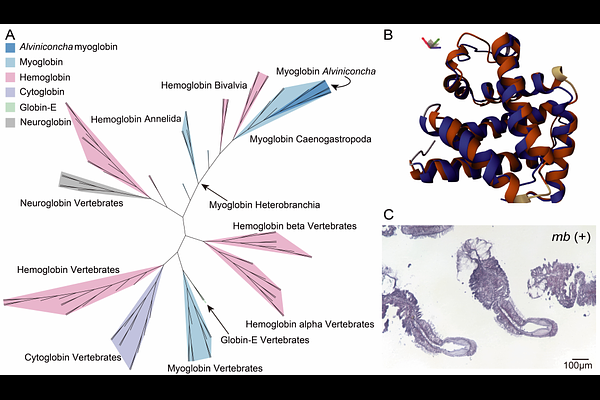Multiple-omics analyses of the Alviniconcha holobiont reveal multi-faceted adaptations to deep-sea hydrothermal vents

Multiple-omics analyses of the Alviniconcha holobiont reveal multi-faceted adaptations to deep-sea hydrothermal vents
Wang, H.; Dai, Y.; Chen, C.; He, X.; Li, M.; Zhou, Y.; Ip, J. C.-H.; Sun, J.
AbstractDeep-sea hydrothermal vents are extreme environments with constantly fluctuating physicochemical conditions - but dense animal aggregations thrive primarily through symbiosis with chemoautotrophic bacteria to exploit the unusual chemistry. Alviniconcha snails, which harbor symbionts in their enlarged gill at an intracellular-extracellular intermediate state, are a prime example. Here, we present chromosome-level genomes of two Alviniconcha species (A. adamantis and A. marisindica) to investigate the adaptations of this holobiont. Significant expansion of solute carrier families enhances nutrient transport between the two parties. Alviniconcha lacks complete methionine biosynthesis pathways, compensated by symbiont provisioning, highlighting host-symbiont metabolic complementarity. High myoglobin expression in gills, contradicting prior reports of hemoglobin, suggests myoglobin-mediated oxygen storage to mitigate fluctuating environmental oxygen. Spatial transcriptomics further delineated gill\'s functional zones on the gill filament responsible for symbiont digestion via phagocytosis in bacteriocytes, oxygen transport in secretory zones, and ciliary water flow regulation. Our findings elucidate molecular and physiological adaptations underpinning the Alviniconcha holobiont\'s success in dynamic and treacherous vent ecosystems.